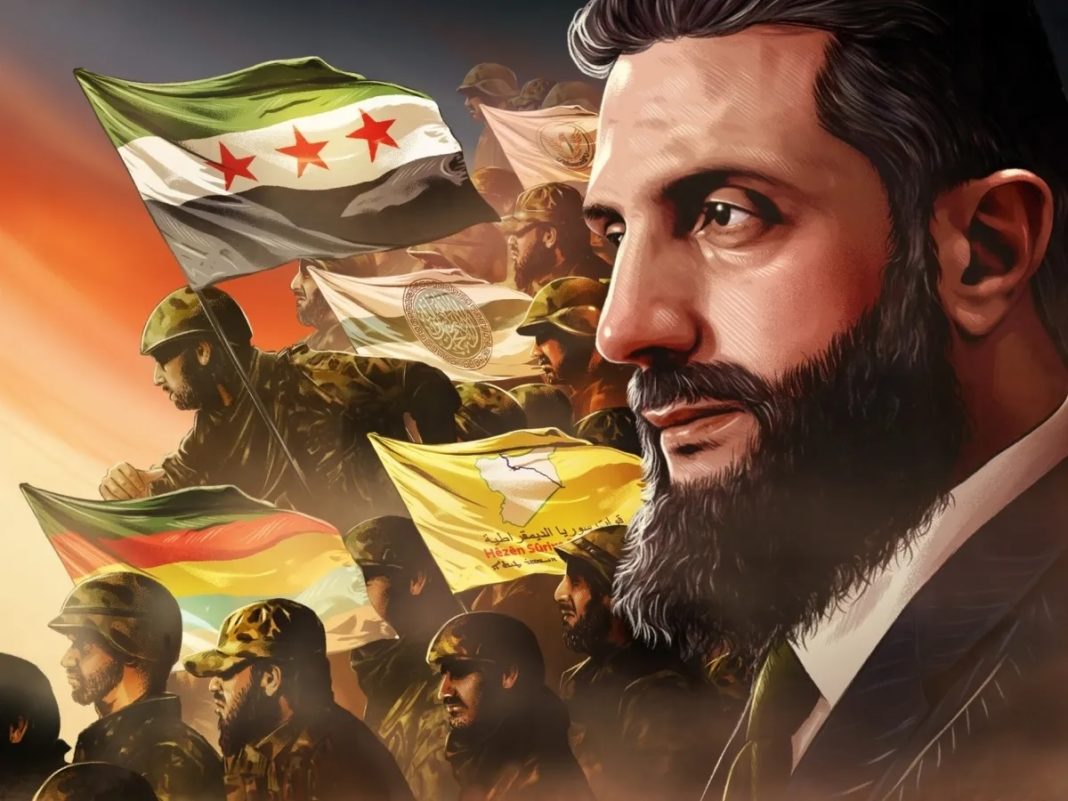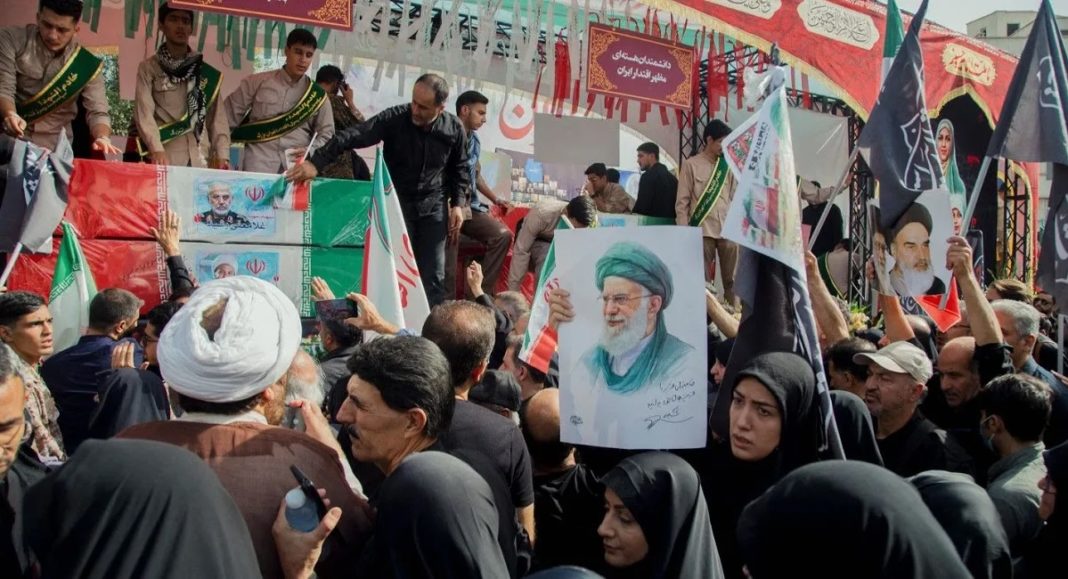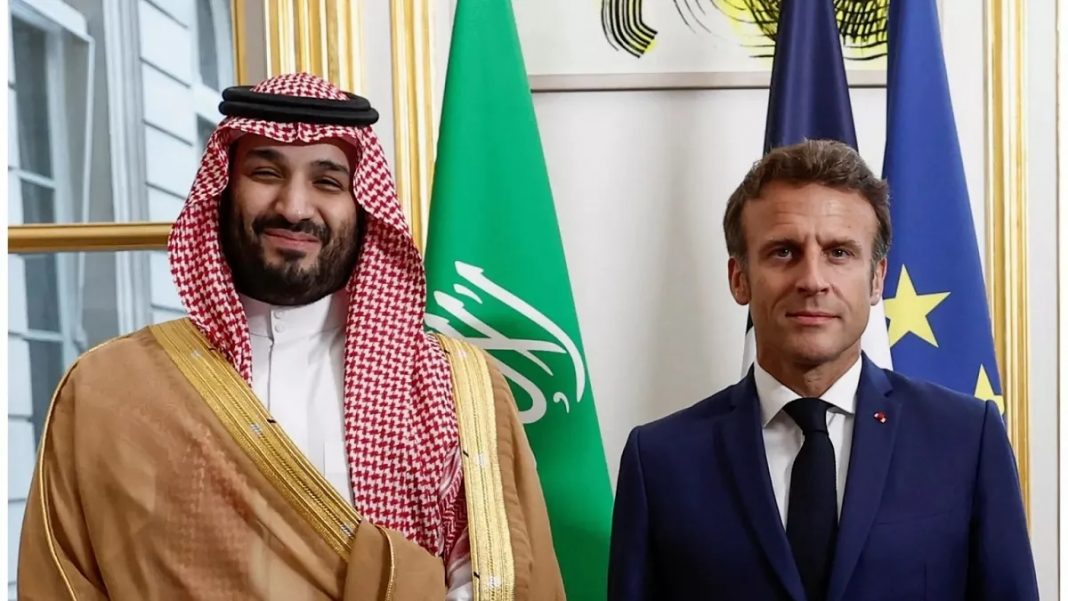Gabriel G. Tabarani
In the aftermath of Bashar al-Assad’s dramatic collapse in December 2024, Syrians glimpsed a future that had eluded them for over a decade: the hope of unity, order, and perhaps, peace. At the heart of this hope was a bold, if daunting, promise—the creation of a single, unified Syrian army from the ruins of a fractured battlefield. Thirteen years of civil war had left Syria carved up by rival factions, ideologies, and foreign interests. The fall of the regime gave the transitional government, led by interim President Ahmad al-Sharaa, a rare opportunity to forge coherence from chaos.
But more than six months on, Syria’s guns remain unruly. The push to unify militias under a national command has produced symbols of progress—uniforms, titles, and formal announcements—but little real integration. The army, such as it is, remains a mosaic of competing loyalties, tenuous alliances, and local warlords reluctant to trade autonomy for chain-of-command discipline.
The vision of a national army—loyal to the state rather than a sect, region, or ideology—is essential. Without it, Syria cannot re-establish a monopoly over the use of force, let alone govern effectively. Yet the process remains paralyzed by four overlapping and deeply entrenched obstacles: mistrust among factions, a lack of financial and institutional capacity, deep ideological divisions, and the meddling hands of foreign powers.
The first and perhaps most corrosive barrier is mistrust. For many factions, particularly those who have long fought against or alongside each other, the idea of joining a national army led by Hayat Tahrir al-Sham (HTS)—the most powerful group behind Assad’s defeat—is less a proposal than a provocation. HTS, with its history of dominance and coercion, inspires fear more than confidence. The appointment of HTS figures to top military posts has confirmed the worst fears of many non-aligned groups: that this is not a national army, but a power grab in uniform.
Factions across southern, northeastern, and even parts of rural Damascus have been hesitant or outright defiant. They resist surrendering heavy weaponry. They insist on remaining as intact units. They question the neutrality of leadership appointments. And behind these actions lies a haunting reality—many fighters fear that laying down arms could open the door to prosecution for wartime abuses. With no clear plan for transitional justice, mistrust festers.
Even if political will existed in abundance, the second obstacle—money—would remain a formidable roadblock. Building a military is expensive. Syria’s economy is shattered, its infrastructure in tatters, and the humanitarian needs of its people immense. The transitional government faces an impossible triage: rebuild the army, feed the population, or reconstruct the nation? International donors, wary of past abuses and HTS’s extremist pedigree, have not opened their wallets despite their promises. In the vacuum, armed groups continue to receive salaries from foreign patrons or through local revenue schemes like smuggling and checkpoint tolls—making them functionally independent and financially self-sustaining.
The third challenge is ideological. Syria’s diversity—once its greatest strength—has become a source of division. The Kurdish-led Syrian Democratic Forces (SDF) and Druze militias in Sweida have long advocated for a decentralized, secular Syria. Their vision clashes directly with HTS’s Islamist leanings and centralized command. Without guarantees of political representation, local autonomy, and protection of minority rights, these groups will never fully submit to a national military apparatus they fear may one day turn on them.
And finally, there is the elephant in the room—foreign interference. Türkiye, Israel, and others continue to play their own chess games on Syrian soil. Turkish-backed factions in the northwest act with impunity, their loyalty to Damascus limited by Ankara’s agenda. In the south, Israeli airstrikes—aimed at shaping a buffer zone near the Golan Heights—have emboldened Druze militias and complicated integration talks. As long as external powers fund, arm, or protect independent militias, Damascus’s calls for unity will ring hollow.
So what is to be done?
First, the transitional government must build trust before demanding loyalty. That means rethinking the top-heavy, HTS-centric approach to leadership and committing to real institutional inclusivity. It also means confronting the ghosts of the past. Transitional justice is not optional—it is the glue that can bind a fragmented country together. Fighters must know that surrender does not mean scapegoating, but also that impunity is not the price of peace.
Second, Syria needs help—but not a blank check. International donors should condition support on clear benchmarks: civilian oversight of the military, inclusion of minorities in leadership, and strict transparency in spending and operations. The lifting of sanctions by the U.S. and EU is a step in the right direction, but funds must not flow into unaccountable hands.
Third, all parties must accept that Syria will never return to a pre-2011 model of authoritarian control. A successful army must reflect the country it serves—not just in ethnicity or religion, but in philosophy. A decentralized, multi-ethnic, and pluralistic military is not a threat to unity—it is the only version of unity that can survive Syria’s wounds.
And lastly, regional powers must stop playing spoiler. Whether it’s Türkiye’s proxy management or Israel’s destabilizing strikes, Syria’s future cannot be subcontracted to foreign interests. The international community must hold interfering states accountable and support diplomatic solutions that respect Syria’s sovereignty.
The unification of Syria’s armed factions is not just a military challenge—it is the crucible in which the country’s future will be forged. If it fails, so too may the dream of a peaceful, sovereign, and inclusive Syrian state. That is why this is not merely about rank and file. It is about reimagining what it means to serve—and to belong—in a nation struggling to rebuild itself from the barrel of too many guns.
This article was originally published in Arabic on the Asswak Al-Arab website


